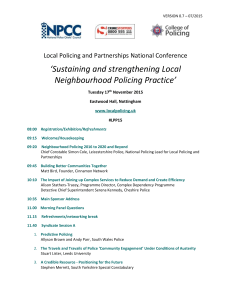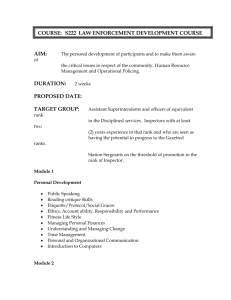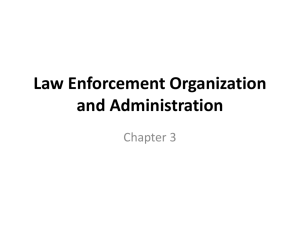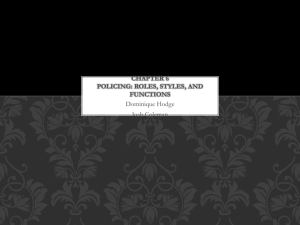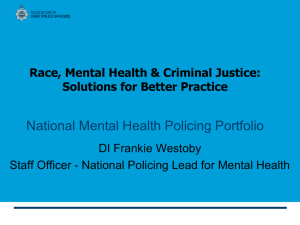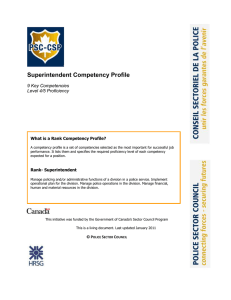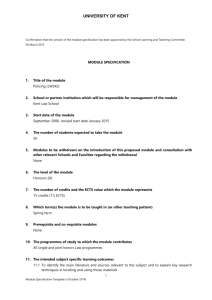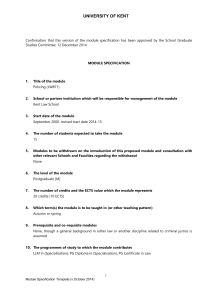CRJ 202_Apr2008 - Heartland Community College
advertisement
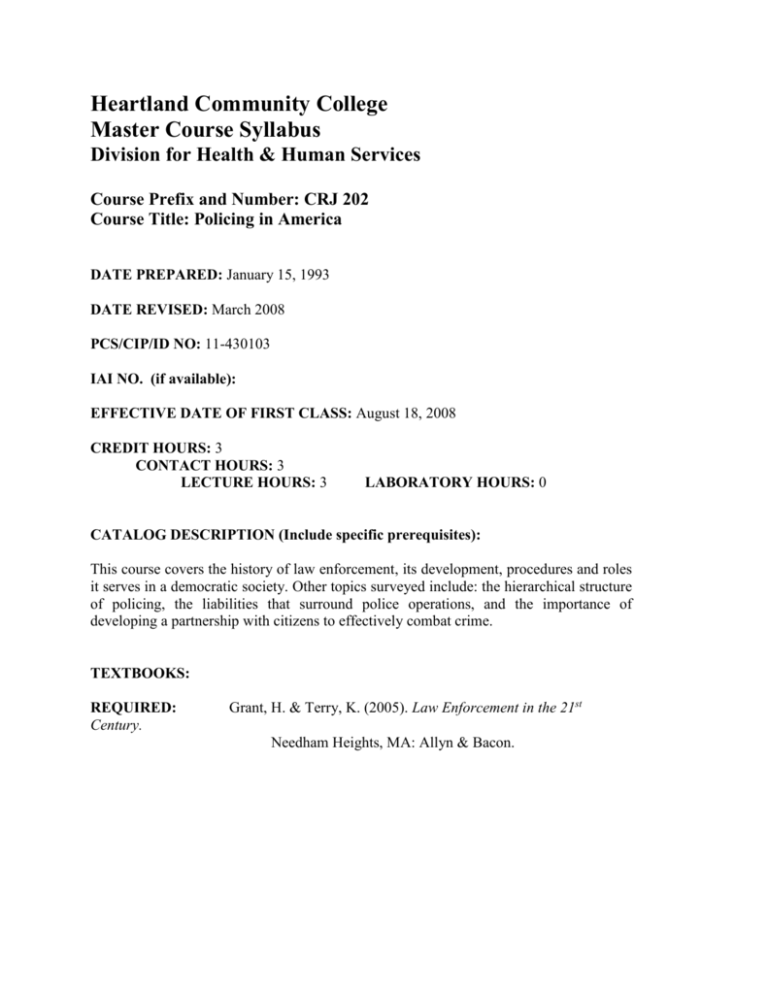
Heartland Community College Master Course Syllabus Division for Health & Human Services Course Prefix and Number: CRJ 202 Course Title: Policing in America DATE PREPARED: January 15, 1993 DATE REVISED: March 2008 PCS/CIP/ID NO: 11-430103 IAI NO. (if available): EFFECTIVE DATE OF FIRST CLASS: August 18, 2008 CREDIT HOURS: 3 CONTACT HOURS: 3 LECTURE HOURS: 3 LABORATORY HOURS: 0 CATALOG DESCRIPTION (Include specific prerequisites): This course covers the history of law enforcement, its development, procedures and roles it serves in a democratic society. Other topics surveyed include: the hierarchical structure of policing, the liabilities that surround police operations, and the importance of developing a partnership with citizens to effectively combat crime. TEXTBOOKS: REQUIRED: Century. Grant, H. & Terry, K. (2005). Law Enforcement in the 21st Needham Heights, MA: Allyn & Bacon. RELATIONSHIP TO ACADEMIC DEVELOPMENT PROGRAMS AND TRANSFERABILITY: CRJ 202 fulfills 3 hours of elective credit for the A.A. and A.S. degrees. It should transfer to most colleges and universities as an elective course. However, since CRJ 202 is not part of either of the General Core Curriculum or a baccalaureate major program described in the Illinois Articulation Initiative, students should check with an academic advisor for information about its transferability to other institutions. COURSE OBJECTIVES (Learning Outcomes): Upon completion of this course, the students will: Outcomes 1. Discuss the historical development of policing in America. 2. Discuss the complexities of police work focusing on issues of organization and management at the federal, state, county and municipal levels. 3. Analyze police culture and the process of socialization and how it might lead to corruption. 4. Examine the role of the police and its interaction with the community and other components of the criminal justice system. 5. Describe the competing and often conflicting expectations which the public has for the police. GEO Range of Assessment Methods Examination questions Short written paper. CT2 Examination questions Classroom discussion DI2 Role playing. COURSE/LAB OUTLINE: Part 1. Introduction to policing and police operations A. Law Enforcement in a Democratic Society B. Origins and Development of Law Enforcement C. Traditional Policing and Police Professionalization D. New Standards for Police Recruitment Examination questions Classroom discussion Part 2. Police Operations A. Policing Functions and Units B. Patrol and Traffic C. Investigation and Evidence Collection D. Advances in Policing – New Technology and Crime Analysis E. Law Enforcement and the Law F. Search and Seizure, Arrest and Interrogation Part 3. Police Behavior A. Police Discretion and Behavior B. Policing the Police C. Community Policing and Problem Solving D. Policing Multicultural Communities/Rural Policing METHOD OF EVALUATION (Tests/Exams, Grading System): Exam one Exam two Exam three Five Real Life Scenarios @ 10 points each Total possible points 100 points 100 points 100 points 50 points ________ 350 points Grading Policy: Your aggregate point value will equate to the following letter grade: 315 to 350 points = 90% - 100% A 280 to 314 points = 80% - 89% B 245 to 279 points = 70% - 79% C 210 to 244 points = 60% - 69% D 209 points or less = less than 60% F REQUIRED WRITING AND READING: Required reading includes the class textbook and additional readings assigned in class.

